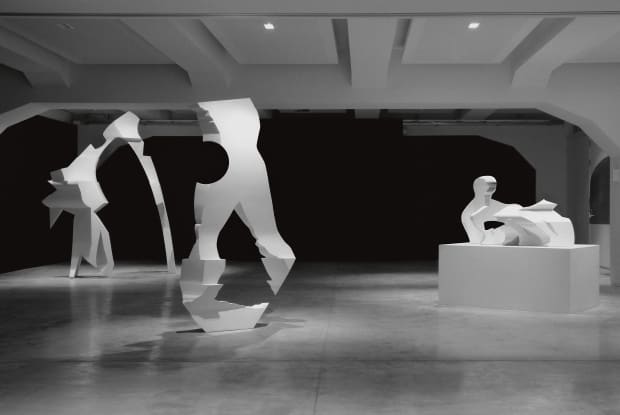-

-
-
-

While at Chelsea, his interests turned toward literary theory and semiotics—an intellectual shift that led him fully into sculpture. After graduating from Chelsea in 2009, Hornby was awarded the University of the Arts London Sculpture Prize. ES Magazine dubbed him “The New Gormley,” and he was listed in the Evening Standard’s “Who to Watch.” That same year, he was commissioned by Tate for the Triennial Altermodern [pictured above] and by the Southbank Centre in connection with the Hayward Gallery’s exhibition Walking in My Mind. His debut solo show, Atom vs. Super Subject (2010), introduced works that merged multiple art-historical references into single forms—often cast in synthetic marble or bronze and presented in a restrained monochrome palette.
-

-

-

Installation at Mostyn
-
-
-
-

-
Selected texts and essays from 2007 - 2023:
Timely Ghosts, Mort Chatterjee, 2023
Deja Vu, Nick Hornby's eerily familiar art, Jason Farago, 2013
Whose Form Is It Anyway? A New Media Curators Notes on Nick Hornby, Omar Kholeif, 2012
Notes and Queries on Quotes and Theories, Ossian Ward, 2010
Atom vs Super Subject, Kathleen Madden, 2010
Beyond the Pale, Brooke Lynn McGowan, 2008
Untitled, after Nick Hornby, Brooke Lynn McGowan, 2007
Selected Videos from 2007 - 2023:
'Zygotes and Confessions' at MOSTYN, Wales UK, 2020
Live streamed artists talk to MFA students, 2020
In Perfect Form, Matchesfashion.com, 2018
Studio X Larsson Jennings, 2016
Nick Hornby Studio, Crane.tv, 2012
Walking in Our Mind, Southbank Centre, 2009
Interviews:
Interview of the month,Paul Carey-Kent, Artlyst, 2023
A Conversation with Nick Hornby, Daniel Kunitz, Sculpture Magazine, January 2021
Sculptor Nick Hornby in Conversation with Composer Nico Muhly, Whitewall Magazine Fall 2017
Mark Sherin interviews artist Nick Hornby, Mark Sherin, FAD, Aug 2017
Nick Hornby, Sculpture (1504 - 2017), Joe Hewitt, PYLOT Magazine, Jul 2017













